140 years of UTokyo: Retrospect and prospect

140 years of UTokyo: Retrospect and prospect
The disappearance of “daigaku,” the University and status struggle, academic disciplines and University organizations, UTokyo as a “space,” and multiplicative history…
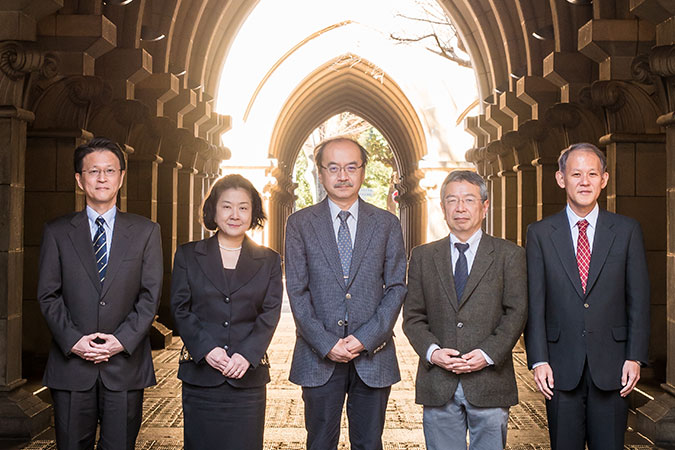
The University of Tokyo will be celebrating its 150th anniversary in 2027, and plans for a compilation of UTokyo’s 150-year history are already underway. Professor Kenji Sato, who is well acquainted with the history of the University, invited four other professors who have distinct opinions about the subject to gather at the Faculty of Letters Library. They had a brisk and engaging discussion about how the past 140 years should be perceived, how the 150-year history should be compiled, and the vision for UTokyo’s future at this milestone in its history.
- Sato: Professor Kato, you took the podium at the 140th anniversary commemorative lecture and gave a talk with an intriguing title: “The History of UTokyo, the History of Japan.”
- Kato: When you trace the roots of UTokyo, you will find the Main Branch of Daigaku, South Branch School of Daigaku, and the East Branch School of Daigaku.*1 However, the Main Branch seems to have vanished during the course of history. This organization that succeeded Shōhei School and taught Kokugaku (Japanese) studies and Han (Chinese) learning disappeared when UTokyo was founded in 1877. It had been reduced to the Division of Japanese and Chinese Literature under the three Faculties that were established: Law, Science and Letters, which were preceded by the South Branch School and later Kaisei School, organizations that focused on western studies. Later, the Meiji government decided to remove the Emperor from politics and deify him. Once the Genrō (elder statesmen) who upheld the balance were gone, the deification progressed and Japan followed the path to imperialism. This was damaging to the state as well as academic disciplines at UTokyo. I chose that title for my talk to stress that we mustn’t forget this history – that the burdens shouldered by modern Japan were also shouldered by the University of Tokyo, the institution in charge of the academic disciplines so integral to the nation. Through the title, I also expressed the need to write about where to place the origin of the University on its 150th anniversary.
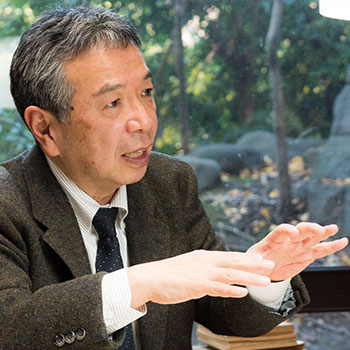
Kenji Sato
Professor (and Dean) of the Graduate School of Humanities and Sociology, specializing in historical sociology. His works include Asakusa Koen: Ryounkaku Junikai (“Asakusa Park: The 12 Stories of Ryounkaku”) (Koubundou Publishers), and Yanagita Kunio no Rekishi-shakaigaku (“Historical Sociology of Kunio Yanagita”) (Serica Syobo).
Academic field selection had an element of status struggle
- Hashimoto: What springs to mind when thinking about the state and universities are the calls for dismantling the University and other anti-UTokyo rhetoric espoused during the Todai funsō (the University of Tokyo Protests). The All Campus Joint Struggle League confronted UTokyo for its imperialistic ways in 1968, exactly 100 years after the Meiji Restoration. As the first university of our country, how UTokyo was to face the nation was in question; bearing some of the nation’s weight was somewhat inevitable. However, I believe that self-reflection was still needed. While UTokyo represented the country, there were also areas for which where they were not responsible. Social welfare departments that exist in other universities, for example, never came to be at UTokyo. Although the University has been responsible for the core fields of modern academia, it was at the same time cutting loose other fields, and the state as well as the University’s intentions were behind these actions. The fact that status struggle among faculty members had a part to play in this cannot be overlooked, either. For instance, medicine, which was taught at the East Branch School of Daigaku, was an alien subject for samurai. I feel that there was certainly a rise in the social status of doctors and medical science with the establishment of the Faculty of Medicine. How Kokugaku and Han learning were treated may also have had such contextual factors.
- Fujii: In terms of social status, at the University of Tokyo, all graduates received bachelor’s degrees; however, at the Imperial College of Engineering, only the high-achieving students were able to receive them. The Imperial College of Engineering, one of the predecessors of the Faculty of Engineering, was considered to be of a lower class. There seemed to have been a general assumption at UTokyo that the Faculties of Law, Science, Letters and Medicine, which have existed since the University was founded, were of high status, while the Faculty of Engineering and the Faculty of Agriculture, which were incorporated later, were deemed lower. Using the word “status” may not be entirely accurate in this case, but at UTokyo, each Faculty is autonomous, so the University is not quite unified in some ways. This was apparent when the decision was being made on when to reconvene classes after the Great East Japan Earthquake. And just the other day, I was speaking with someone from outside the University, telling them that the start time of classes had recently become the same across all Faculties and Graduate Schools. They burst into laughter, saying: “after all this time!?”
- Hashimoto: It must be rare to have a university with curriculum management this scattered.
- Uno: I feel this particularly when there are typhoons. At other universities, central administrations decide whether there will be classes or not and announce it on their websites, but at UTokyo the approach differs from Faculty to Faculty.
- Sato: Even going all the way back to the history of the Qin dynasty, standardization of the calendar, currency and the system for weights and measures has been indispensable for empires. This university, meanwhile, was an amalgamation of different colleges…
- Hashimoto: When it comes to academic disciplines, I feel that that Faculties of UTokyo tend to be very rigid, and any new fields are taken on elsewhere.
- Fujii: All the Faculties have remained the same for about ten years or so, but many new University-wide Centers and other organizations have opened.*2
- Uno: It is said that UTokyo developed as the “switchboard of civilization,” but it is a bit biased to say that the emphasis has been placed solely on the import of western studies. Speaking of academia in the Edo period, Neo-Confucianism such as the Cheng-Zhu school and Yangmingism comes to mind, and Confucianism led by Ogyu Sorai advanced in opposition; the Meiji Restoration came after the development of such academic disciplines. As pointed out by Tadashi Karube*3, western learning must have been accepted because the groundwork for civilization was already there in the Edo period. In my opinion, it is outdated to talk about universities with the image of them as simply being useful to modern nations. For instance, the distinction between social sciences and humanities is a 19th century concept, but these classifications themselves have stayed the same to date. Until now, the response has been to increase the number of institutes, University-wide Centers and organizations, but the composition of the Faculties themselves has not changed much. While on one hand I want to value tradition, I feel that it is no good to be too locked into the framework of a certain era.
- Sato: In the Faculty of Letters, the reconstruction of academic disciplines cannot be discussed without departments. Those who returned from their studies abroad in the Meiji 30s (1897-1906) laid the foundation for the departments. Although it is still not an official organization or a system, the structure that supports specialized fields, which was clearly established during the Taisho period, is not based on the classrooms where lectures are held. It is instead built upon departments, which are equipped with reference books and facilitate interactions between students and teachers. So, how about the Faculty of Law or the Faculty of Engineering? It would be interesting to trace how each Faculty’s structure came to be.
- Hashimoto: Up until around Meiji 30 (1897), there must have been a strong sense amongst the academic staff of every Faculty that they were administrative officials. With the establishment of the academic chair system and improvements in the salary system, they became aware that they were responsible for their academic fields. The emergence of a sense of identity as a university professor, the establishment of a laboratory system, and the growing momentum for the reconstruction of academic disciplines seem to have occurred in parallel.
At what turning points do people choose to write history?
- Kato: For me, when it comes to writing about history, I like to start with considering the period about which one wants to write. People set out to write history after major turning points in time. I believe the mere fact that we can describe the potentials and the failures of university incorporation in Japan is a milestone in itself, representing the transition period we are currently in as we set out to write the 150-year history. That’s my personal opinion…
- Sato: The Archives Section of the University of Tokyo (now the University Archives) was created on the occasion of the compilation of the 100-year history.*4 How are we to share and retain materials for compiling the 150-year history? How we continue to think about the history of the University while using electronic technology will lead to how we are to support research infrastructure.
- Uno: Around the 50-year and the 100-year mark, there must have been a sense of crisis that the history may get lost. I feel that the impact of AI has been significant for the 150-year history. What of modern Japan will be passed on to the rest of the world? I think the 150-year mark is the perfect timing to think about that.
- Fujii: The departments at the Faculty of Engineering have changed vastly since the 100-year history. While some departments like shipbuilding have disappeared, others such as biotechnology have been established. Corporate demand and changes in the industrial structure played a part in this, too. For the 150-year history, I think it would be better to write about what kind of research has been done and how research and society have been involved with one another, rather than the institutional history of departments. In the sciences, there are basic technologies that support academic disciplines in each field. For instance, in biotechnology, when dealing with blood, membrane filtration technology determines what size pores its particles should be passed through. The development of this membrane changes all related research and societies involved. Such basic technologies exist in every field, and it is dangerous to shift our focus to AI without learning these technologies. Starting from the undergraduate level, I want students to gain an awareness of what AI can and cannot do. For instance, what materials are needed when building a desk, and how do you put them together? What would we do in a world where no electricity can be used? It is problematic to only know what is above without understanding what is below. Basic technology and advanced technology coexist.
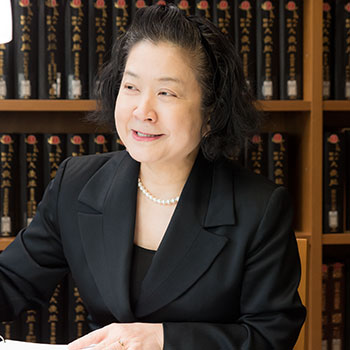
Yoko Kato
Professor of the Graduate School of Humanities and Sociology, specializing in modern Japanese history. Her works include Senso made (“Until the War”) (Asahi Press) and Soredemo Nihonjin wa “Senso” wo Eranda (“Yet the Japanese People Chose War”) (Shinchosha).
- Kato: I believe the 150-year history has to be written by people. I am envisioning a series of biographies of UTokyo researchers which we all contribute towards. We could collect knowledge and make it accessible to anyone who is interested. For instance, if a Taiwanese person can read kanji characters, they will be able to understand the majority of what is written without knowing any Japanese. With the humanities, I think it would be meaningful to use Japanese, even if it’s very basic, when publicizing research to the rest of Asia.
- Sato: The 100-year history was composed of three sections: the overview, organizational history, and reference materials. For the 150-year history, however, we at the working group are considering a thematic approach. When I previously researched the company history of Hitachi, I read that they started off developing, manufacturing and repairing their own technology needed for excavation, transportation and lighting in mine tunnels. In the course of doing this, they became a huge conglomerate creating a range of machines from elevators, bullet trains and ships to computers, home electronics and nuclear power plants. It was interesting to see from a single company’s history how and through what machines the power of electricity was used to transform society and human lives. Perhaps UTokyo will be able to tell the history of modern universities in such a way.
- Hashimoto: That would be great. What sort of audience would we target? It’s best if the book sells well.
- Sato: It’d be wasteful if the book becomes nothing but a decorative piece of furniture. Ideally, I’d want it to be a book that lets young people feel the value of learning at a university.
- Uno: I think we can aim for it to be both fundamental material used by researchers to reflect on academia so far, as well as reading material that spreads information on the work at UTokyo to the rest of society.
- Kato: I think having someone or something to aspire to is important. Whether it is the protagonist in Natsume Soseki’s Sanshiro or the medical student in Mori Ogai’s The Wild Geese, people of UTokyo have been portrayed as wonderful individuals. I want to add to this content to give us ambitions for the future. Technologies like membrane filtration support Nobel Prize research, for instance. The value of supporting research may also lead to such ambitions.
- Fujii: Only one person receives each Nobel Prize, but there are about ten candidates every year. There are that many kinds of research that are on the same level, with so many people supporting each of those researchers. I think it would also be great to show that universities are places where this kind of cooperation in research happens. I feel that there is a lot of interesting research going on that isn’t necessarily being seen from the outside.
- Kato: There are around 100 students (including graduate students) who are studying Japanese history, but the main people who support their ambitions are the fixed-term assistants. This might be true across both the humanities and the sciences, but their role in supporting the actual research environment is incredibly significant. Perhaps someone should spotlight them in future writing…
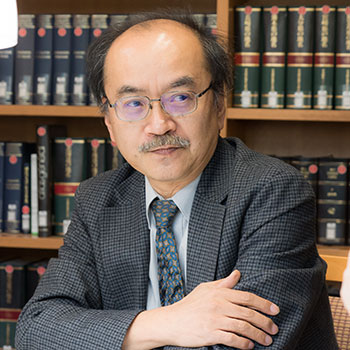
Keisuke Fujii
Professor of the Graduate School of Engineering, specializing in the history of architecture. Co-authored works include Nihon Kenchikuyoushiki-shi (“The History of Japanese Architectural Style”) (Bijutsu Shuppan-sha), Kenchiku no Rekishi (“The History of Architecture”) (Chukou Bunko), and Sekino Tadashi Asia Tosa (“Tadashi Sekino’s Asia Survey”) (The University Museum, The University of Tokyo).
The “power of place” at universities expanded knowledge
- Uno: Star researchers are the ones who appeal to high school students, but it may be good to also look at the individuals behind the scenes in order to communicate the depth of scholarship. After all, with universities, the power that places have had in maintaining and expanding knowledge is prominent.
- Hashimoto: Indeed, and I feel that how the disciplines inherited by each Faculty and laboratory should be expanded and reproduced has not been well communicated in the past history editions.
- Sato: There were a lot of department-based and -edited publications that communicated information like the Faculty of Letters Alumni Association’s Kaiho (“bulletin”), but they were shared only amongst a small audience. In order to archive such materials for the 150-year history, we must seek cooperation from graduates, too.
- Kato: In terms of reputation, I think that many graduates are feeling discouraged about the recent university rankings. I wonder if UTokyo ever looked at itself in comparison to others in the past.
- Sato: International comparisons seem to be the trend now, but during the Meiji period there was probably no interest in comparing numbers, at least.
- Fujii: In the 1970s, it became the norm to go overseas for science postdocs, as other countries were more advanced at the time. Now, there is no need to leave the country, and plenty of researchers and students come here from overseas. There are many Chinese students in the Graduate School of Engineering – if these students all go home to become successful, though, it’s almost as if UTokyo is running a business that gives out doctoral degrees.
- Uno: I wish international students would play an active role in Japan after receiving their exceptional education at UTokyo. If the rankings decline and UTokyo just returns talented international students to their home countries with doctoral degrees, then it’s a double loss for us. However, there is hope. Many Chinese and South Korean students join my seminars, taking interest in Japan’s past academic history and researching these fields that Japanese students aren’t necessarily interested in.
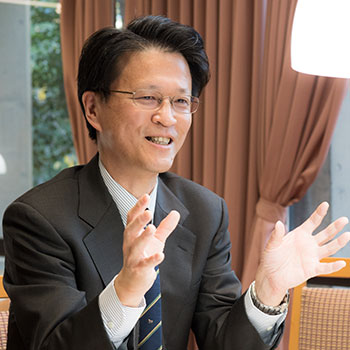
Koichi Hashimoto
Professor of the Graduate School of Education, specializing in higher education theory. His works include Kotokyoiku no Seisaku Katei (“Higher Education Policy Process”) Senmonshoku no Hoshu to Shokuiki (“Remuneration and Scope of Work for Professional Positions”), and Daigakusei Campus no Seitaishi (“University Students: An Ecological History of Campuses”) (Tamagawa University Press).
- Fujii: It’s the exact same in my laboratory. International students show interest in past themes that Japanese students do not. Perhaps Japanese students do not see their appeal...
- Kato: This may be too much for a historian to ask for, but I think it would be great if every Faculty had a researcher specializing in the history of the discipline. I’m sure this would allow the appeal of each subject to be communicated directly.
- Fujii: It may be unprecedented for a 150th anniversary project, but wouldn’t it be great if all faculty members submit what academic lineage they consider themselves to be a part of? With the sciences, they could talk about what kind of tools they have used in experiments, and for the humanities, what kind of books they have written. It would make for some thought-provoking history.
- Hashimoto: It would be an extremely interesting endeavor if we could grasp an overview of academic disciplines by organizing individual research profiles.
- Sato: For the 200-year history, a complete collection of publications including data under a large framework may be required, but I feel like we can be freer in our approach to the 150-year history.
- Uno: In reality, it won’t be enough to just write out such data. It would be ideal if we can express in words how past academic fields are viewed, and make it something that can be reused.
- Fujii: I hear that neither Cambridge nor Oxford has an official university history. Even if there are books on university history, they are very much author-based. This means they can be written freely; perhaps we can make the authors responsible for the 150-year history, too.
- Sato: It you were to write it, Professor Fujii, I feel like the theme would be something along the lines of “How the University of Tokyo has Evolved as a Space.”
- Uno: When you go to the top universities in the United States, you always see on their campuses that the old and the new are able to coexist, and I feel like that is what determines a university’s level of prestige.
- Kato: People from overseas who visit UTokyo almost always take their photographs in front of old buildings.
- Fujii: I think that Hongo Campus could become a beautiful campus like Oxford University’s if more people prefer older buildings to new ones – after all, there are plenty of architects at UTokyo who are skilled at renovating existing structures while preserving them.
- Hashimoto: We tend to forget, but as a university, the history of our administrative staff members is also integral.
- Sato: There are plenty of administrative documents lying dormant in storage spaces, like materials from council or faculty meetings or those containing student information. However, using such documents would raise privacy issues, so it will probably be necessary to get the whole University involved and come to an agreement in order to do so.
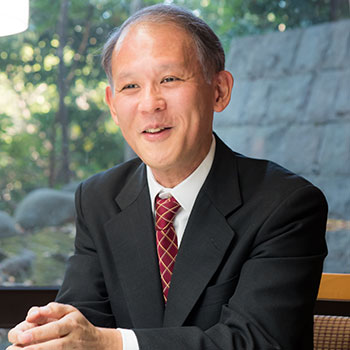
Shigeki Uno
Professor of the Institute of Social Science, specializing in the history of political thought. His works include Hoshushugi to wa Nani ka (“What is Conservatism”) (Chuko Shinsho), Seiji Tetsugakuteki Kousatsu (“Political Philosophical Thought”) (Iwanami Shoten), and Minshushugi no Tsukurikata (“Making Democracy”) (Chikuma Sensho).
Visualizing past knowledge to move forward
- Uno: Looking at it now, it seems like we need to increase the momentum to preserve and capitalize on everything from documents to academic techniques to buildings in the lead up to the 150th anniversary. However, it may be hard for all to come to an agreement if it is just for the sake of recording the past. We must demonstrate that these things are essential in the systemization and visualization of past knowledge, which is necessary in order to move forward.
- Sato: I feel that the history we are envisaging consists of “additive history” and “multiplicative history.” For instance, there is a common misperception that simply writing a bunch of facts on a blank timeline and adding them together is history. However, this is decisively insufficient. I am of the opinion that if these facts aren’t multiplied with current interests, they have no significance to begin with, and therefore do not qualify as “history.” Without an interest in the present and an awareness of current issues, historical records tell us nothing. I therefore believe that it would be best if the UTokyo 150-year history incorporates and addresses various issues and interests.
Extra talk
- Uno: Professor Kato, we have the same ballpoint pen.
- Kato: I quite like the Uniball Signo 0.5mm.
- Hashimoto: Mine is a Jetstream 0.7mm.
- Uno: And the cards you have there are…
- Hashimoto: B6 index cards!
- Kato: I organize them chronologically, but today I changed out the ones on the 140th anniversary lecture.
- Sato: Shall we get Professor Kato to write a history of the “art of intellectual production”!?*5
Photos: Junichi Kaizuka
Footnotes
1. The South Branch School of Daigaku was a Western school originating from the Institute for the Study of Barbarian Books and the Institute for Western Studies. The East Branch School of Daigaku was a medical school preceded by the Otamagaike Vaccination Clinic and the Institute of Medicine. The “south” and “east” in the names denote where they were positioned in relation to the Main Branch of Daigaku.
2. Currently, there are 14 University-wide Centers: the University Museum; Cryogenic Research Center; Isotope Science Center; Environmental Science Center, Research into Artifacts, Center for Engineering; Biotechnology Research Center; Asian Natural Environmental Science Center; Center for Research and Development of Higher Education; Center for Spatial Information Science; Information Technology Center; International Center for Elementary Particle Physics; VLSI Design & Education Center; Policy Alternatives Research Institute; Center for Research and Development on Transition from Secondary to Higher Education.
3. Professor of the Graduate Schools for Law and Politics. Referenced from his book: “Ishin Kakumei” e no Michi (“The Road to the Restoration Revolution”) (Shinchosha Publishing).
4. Tokyo Daigaku Hyakunen-shi (“A Hundred-year History of the University of Tokyo”) was issued from 1977 to 1987. There is a total of ten volumes, with three volumes on the comprehensive history, another three on historical documents and four volumes on organizational history. Tokyo Teikoku Daigaku Gojunen-shi (“A 50-year History of Tokyo Imperial University”) was published in two parts in 1932. It is said that Toshiaki Okubo, who was an assistant at the Department of National History and grandson of historical figure Toshimichi Okubo, wrote the manuscript essentially alone.
5. The use of B6-sized index cards as an ideal means for recording and organizing information was advocated by author Tadao Umesao in his book, The Art of Intellectual Production.
* Professors’ titles are that at the time of publication.
* This interview was originally printed in Tansei 36 (Japanese language only). All information in this article is as of March 2018.






